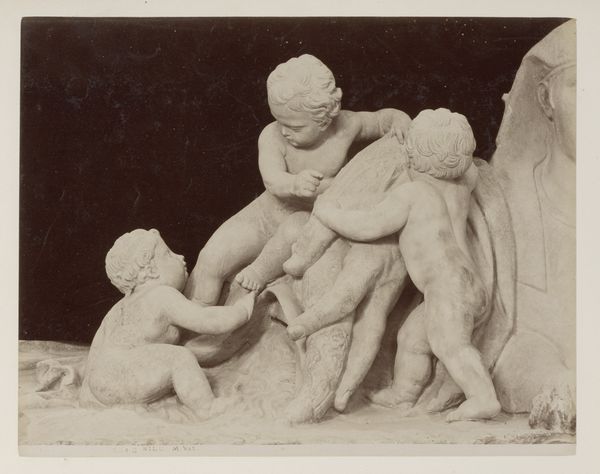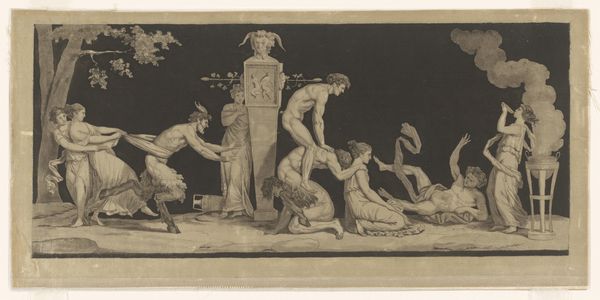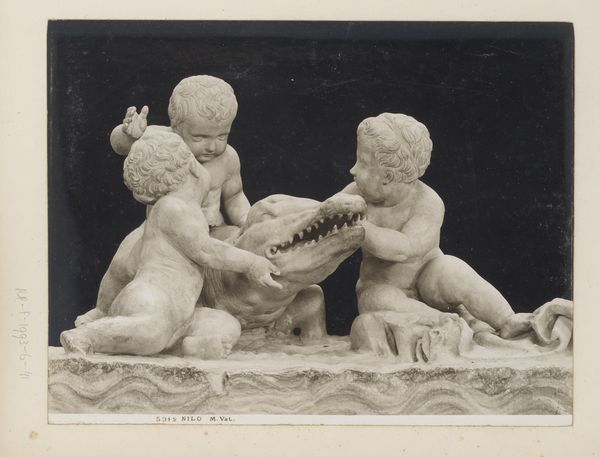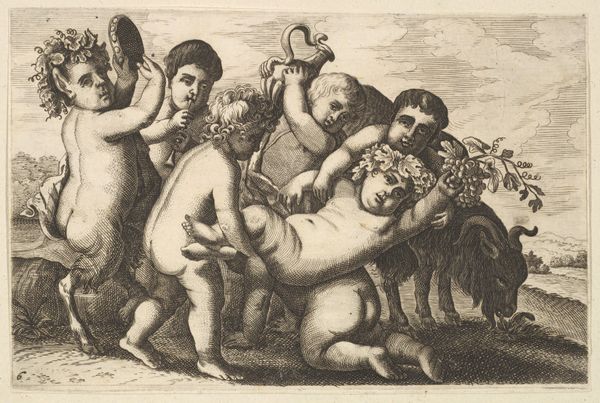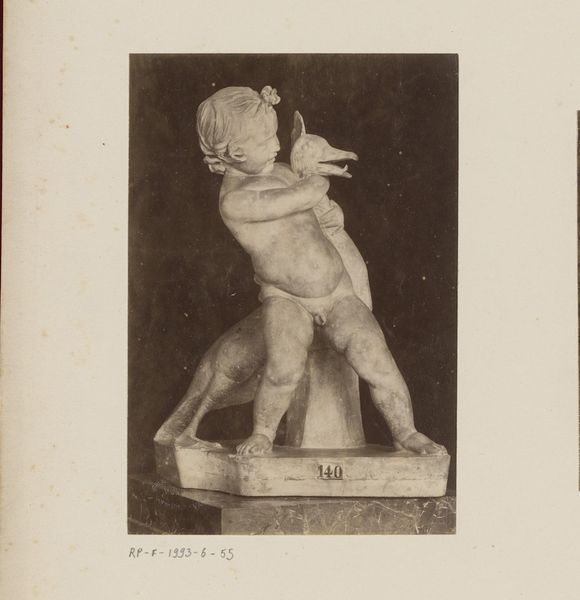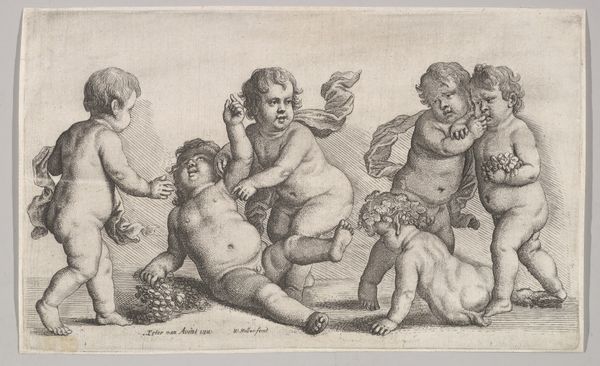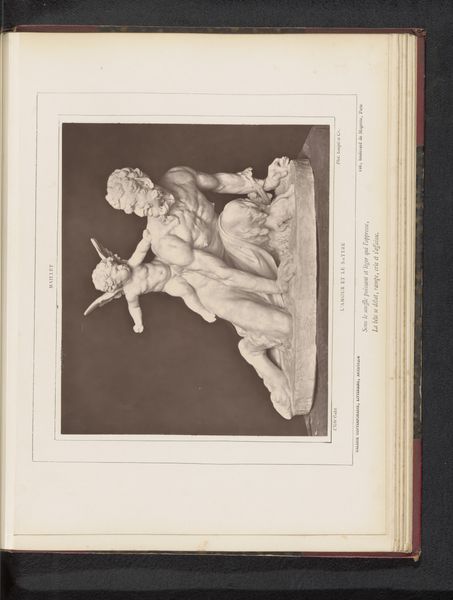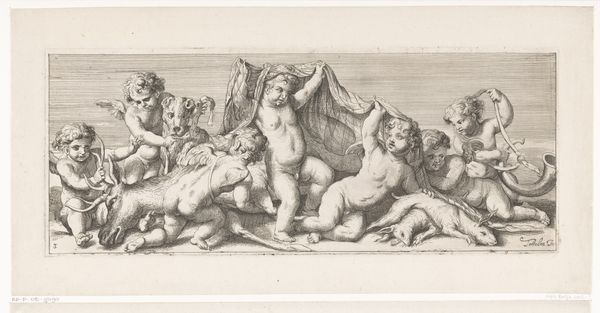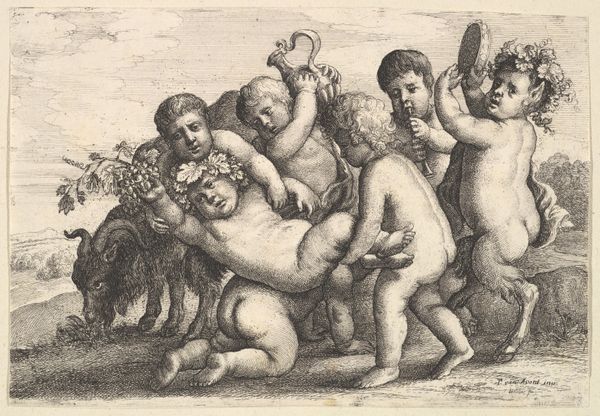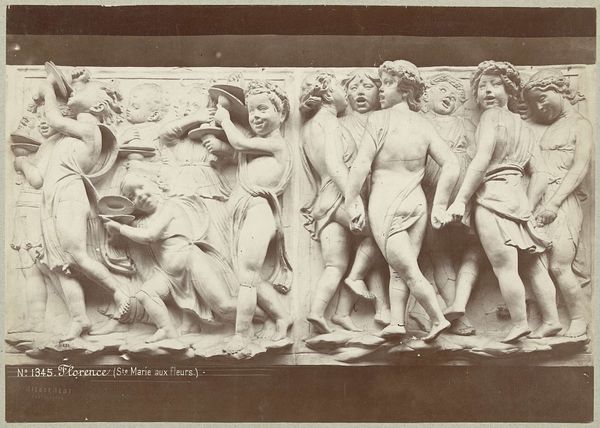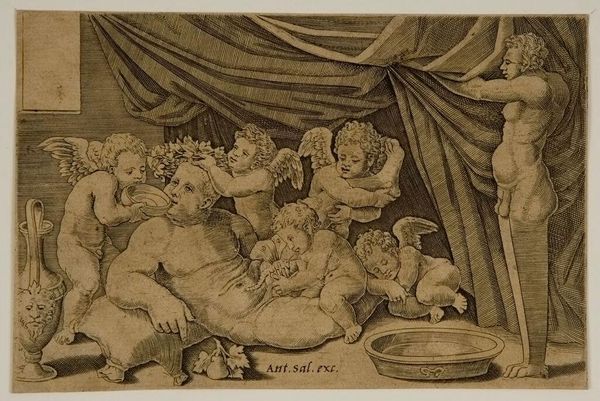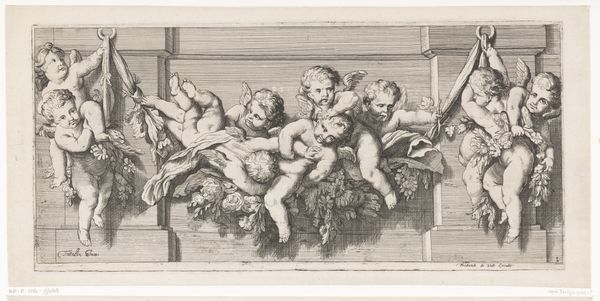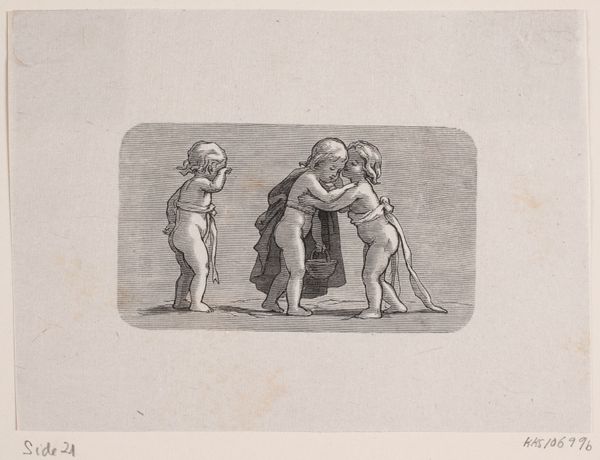
relief, sculpture, ivory
#
relief
#
classical-realism
#
figuration
#
ancient-mediterranean
#
sculpture
#
genre-painting
#
ivory
Dimensions: height 49 mm, width 102 mm, height 241 mm, width 320 mm
Copyright: Rijks Museum: Open Domain
Curator: Before us is a photograph depicting an ivory relief carving, titled "Ivoren snijwerk op de Tentoonstelling van oudheden in Delft," or "Ivory Carving at the Exhibition of Antiquities in Delft." It’s attributed to A.L. Oversluijs, dating before 1863. Editor: Immediately, I'm struck by the stark contrast—the light ivory against that deep background creates a really theatrical effect. It has a sense of Bacchanalian revelry. Curator: Indeed. The image showcases a cluster of putti or cherubic figures, engaged in what seems like a celebratory procession, along with figures that bring to mind representations of bacchantes or perhaps satyrs from classical mythology. Ivory, of course, was a prized material, requiring significant labor to acquire and carve. The artist had the skills for intricate detail to capture the folds of cloth and expressions. Editor: Thinking about this ivory, my mind wanders to the colonial trade routes from which it may have been extracted. The act of possessing and displaying something so luxurious was then, as it often is now, a blatant articulation of wealth and social status. Curator: The classical motifs are very much in line with the academic art traditions of the period. It could represent an attempt to claim cultural legitimacy and demonstrate sophisticated taste by appropriating visual languages associated with the classical era. Editor: These classical allusions provided a veneer of respectability. How interesting that in the mid-19th century the domestic exhibition and consumption of such carvings also occurred alongside an increase in moral debates about slavery. There is a contrast between the playful representation of putti, often associated with freedom and innocence, and the potential for these art objects to have histories tied to exploitation. Curator: Absolutely. To create such fine detailing from this dense material is a considerable act of artisanship that relies on learned techniques, tools, and a particular kind of labor to translate classical form through contemporary eyes. Editor: Considering the piece’s presence at an exhibition of antiquities, this speaks volumes about how historical objects, even reproductions or classically styled works, play a critical role in shaping narratives around national identity, value, and cultural heritage. I wonder how many viewers truly contemplated these complexities back in the day? Curator: A lot to unpack. Considering the source and artisanship behind the relief reminds us of the socio-economic contexts framing such craftsmanship and its reception during its era. Editor: Ultimately, this is a snapshot into the consumption habits and aesthetic preferences of 19th-century Delft, and provides a springboard for examining how these displays of wealth were intricately linked to the societal power structures of the time.
Comments
No comments
Be the first to comment and join the conversation on the ultimate creative platform.
